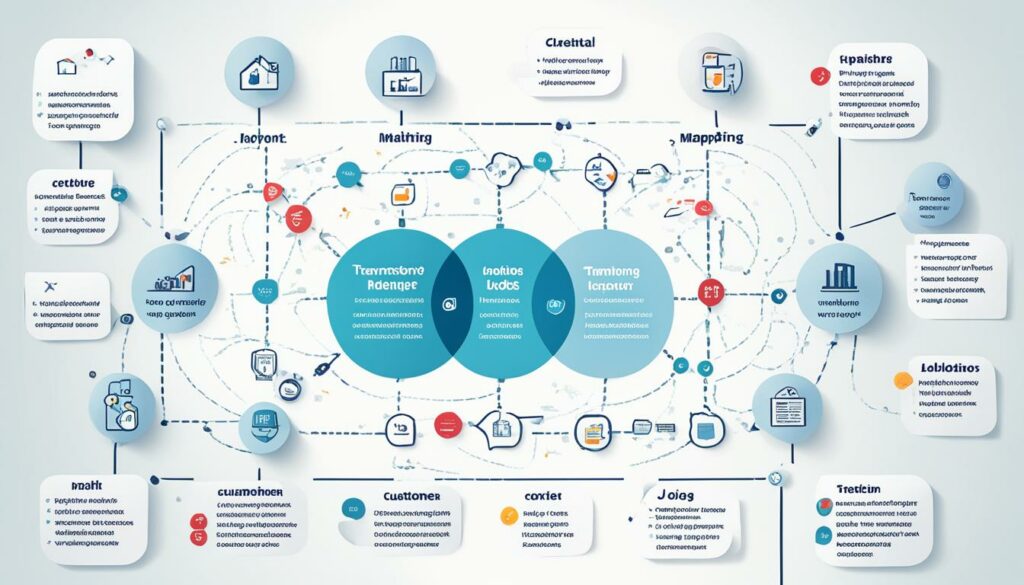
From Tasks to Transformation: The Jobs to be Done Theory Explained

Have you ever wondered why some products succeed while others fail? And why do customers choose one product over another? The answer lies in understanding the deeper motivations behind customer behavior. That’s where the Jobs-to-be-Done Theory comes in. It’s a powerful framework that goes beyond traditional marketing strategies and product development, allowing businesses to tap into the true needs and desires of their customers.
The Jobs-to-be-Done Theory challenges the common belief that customers buy products based on their features or brand loyalty. Instead, it focuses on the tasks customers want to accomplish and the goals they want to achieve. By understanding the “job” customers are trying to get done, businesses can develop products and services that truly meet their needs, leading to increased customer satisfaction and business growth.
In this article, we’ll delve into the Jobs-to-be-Done Theory, exploring its key tenets and how businesses can put it into practice. We’ll also discuss its relevance in different business disciplines and its relationship with design thinking. By the end, you’ll have a solid understanding of how this theory can transform your approach to innovation and drive success in the market.
Key Takeaways:
- The Jobs-to-be-Done Theory focuses on understanding customer needs and goals to create products that fulfill specific tasks.
- By applying the theory, businesses can align teams, develop winning products, and communicate effectively with customers.
- The theory provides valuable insights for various business disciplines, such as product development, market segmentation, and user experience.
- Jobs-to-be-Done Theory complements design thinking by ensuring the right product is developed to address customer needs.
- Frameworks, such as JTBD Market Definition Canvas and JTBD Growth Strategy Matrix, guide businesses in the innovation process.
What is the Jobs-to-be-Done Theory?
The Jobs-to-be-Done Theory is founded on the economic principle that people buy products and services to fulfill specific jobs or tasks in their lives. Instead of solely focusing on the product or the customer, this theory suggests that companies should prioritize the customer’s job-to-be-done in their analysis and innovation endeavors. By gaining a deep understanding of these jobs and developing offerings that effectively address them, companies can create value for their customers and gain a competitive advantage.
The Jobs-to-be-Done Theory emphasizes the importance of customer analysis and diversifying innovation initiatives. By adopting this customer-centric approach, businesses can uncover new insights and opportunities for value creation.
“The Jobs-to-be-Done Theory allows companies to understand not just what customers want, but why they want it.”
With this theory, companies move beyond surface-level customer wants and needs. They dig deeper to discover the underlying motivations and goals driving customer behavior. By understanding the jobs customers are trying to accomplish, companies can develop solutions that truly meet their needs and provide meaningful value.
To illustrate the impact of the Jobs-to-be-Done Theory, consider an example from the smartphone industry. Instead of simply focusing on technical specifications or customer demographics, this theory prompts companies to analyze the specific jobs customers hire smartphones to do. By understanding that customers may seek to accomplish tasks such as staying connected, capturing memories, or managing their schedules efficiently, companies can develop innovative features and functionalities that align with these job-to-be-done requirements.
The Customer Analysis Process
Implementing the Jobs-to-be-Done Theory involves a comprehensive customer analysis process. This process involves:
- Gaining insights into customer motivations and goals
- Identifying the key jobs customers are trying to accomplish
- Breaking down the core job into smaller steps for better understanding
- Developing solutions that address customer needs efficiently and effectively
This customer-centric approach enables businesses to tailor their offerings to meet specific customer requirements and exceed expectations.
Value Creation and Innovation Initiatives
The Jobs-to-be-Done Theory introduces an innovative perspective on value creation. Emphasizing the fulfiment of customer jobs-to-be-done rather than the creation of new products or services, companies can unlock new opportunities for innovation.
By aligning their innovation initiatives with customer jobs, businesses can develop offerings that provide unique value propositions and differentiate themselves in competitive markets. This strategic alignment allows companies to better understand customer needs, personalize their offerings, and deliver superior customer experiences.
Adopting the Jobs-to-be-Done Theory in innovation initiatives also helps companies minimize market risks. By focusing on delivering solutions that directly address customer jobs, businesses can increase the chances of successful market adoption and minimize the risk of developing products or services that do not meet customer requirements.
Unlocking the power of the Jobs-to-be-Done Theory enables companies to create customer-centric value propositions, drive innovation, and achieve sustainable growth.
Visualizing the Jobs-to-be-Done Theory
| Traditional Approach | Jobs-to-be-Done Approach |
|---|---|
| Product-focused analysis and development | Customer-focused analysis and value creation |
| Meeting generic customer needs | Tailoring solutions to specific customer jobs |
| Innovation driven by technology or features | Innovation driven by customer needs |
| Competition based on price or functionality | Competition based on superior job fulfillment |
| Higher risk of missed market opportunities | Higher probability of customer acceptance |
As seen in the table above, the Jobs-to-be-Done approach shifts the focus from the product to the customer and provides a framework for driving successful innovation and value creation.
The Tenets of Jobs-to-be-Done Theory
The Jobs-to-be-Done Theory is a powerful framework that provides companies with a solid foundation to apply in their marketing and innovation efforts. By embracing the key tenets of this theory, businesses can gain valuable insights into customer needs and create solutions that truly meet those needs.
Functional Jobs with Emotional and Social Components
One of the fundamental tenets of Jobs-to-be-Done Theory is the recognition that jobs are not only functional but also have emotional and social components. Customers don’t just buy products or services solely for their functional abilities; they seek solutions that satisfy deeper emotional and social needs. By understanding the emotional and social aspects of customer jobs, companies can create offerings that resonate on a deeper level and create meaningful connections with their customers.
“Customers don’t just buy products; they seek solutions that satisfy deeper emotional and social needs.”
Stable Over Time
Another crucial tenet of Jobs-to-be-Done Theory is that customer jobs are stable over time. While specific products and solutions might change, the underlying jobs themselves remain consistent. This stability allows companies to focus on fulfilling the job rather than being tied to a particular solution. By understanding the enduring nature of customer jobs, businesses can develop long-term strategies that provide consistent value.
Solution Agnostic
The Jobs-to-be-Done Theory is solution agnostic, meaning that it emphasizes fulfilling the job, rather than relying on a specific product or solution. This tenet encourages companies to look beyond their own offerings and instead focus on the needs of the customer. By adopting a solution agnostic approach, businesses can identify opportunities to create innovative and disruptive solutions that truly address customer needs.
By embracing the tenets of Jobs-to-be-Done Theory and understanding that customer jobs are not solely functional, but also have emotional and social components, stable over time, and solution agnostic, companies can position themselves to create products and services that truly resonate with their target customers.

Putting Jobs-to-be-Done Theory into Practice
Applying Jobs-to-be-Done Theory in practice can revolutionize your business and drive transformative growth. By embracing this theory and implementing its principles, you can unlock a common language of innovation that aligns teams, creates winning products, and enables effective communication.
The Power of Alignment
One of the key advantages of Jobs-to-be-Done Theory is its ability to align teams from various functions within your organization. By focusing on the customer’s needs and jobs-to-be-done, teams can set aside individual agendas and work together towards a common goal: creating value for your customers.
“Jobs-to-be-Done Theory provides a framework for aligning teams and breaking down silos within organizations.” – Industry Expert
When your teams are aligned, they can collaborate effectively, leveraging their diverse expertise to develop innovative solutions that truly meet your customers’ needs. This alignment fosters a shared understanding and ensures that everyone is working towards a common objective, streamlining the innovation process.
Creating Winning Products
Jobs-to-be-Done Theory emphasizes designing offerings that address specific customer segments and fulfill their unique jobs-to-be-done effectively. By truly understanding your customers’ needs and goals, you can develop products that exceed their expectations and outperform competitors in the market.
By leveraging a customer-centric approach, you gain valuable insights into the pain points and motivations of your target audience. This knowledge enables you to create products that provide the best solutions to their specific challenges, making it much more likely that your offerings will succeed and resonate with customers.
Effective Communication through Customer Alignment
When it comes to marketing and communication, Jobs-to-be-Done Theory provides a powerful framework for aligning your messaging with customer needs. By understanding the job your customers are trying to accomplish, you can craft compelling and persuasive messages that resonate with their goals and aspirations.
“Jobs-to-be-Done Theory allows marketers to communicate more effectively by speaking the language of their customers.” – Marketing Guru
When you speak your customers’ language, you establish a connection and build trust, enabling you to effectively communicate the value proposition of your products and services. This customer-centric approach to communication ensures that your messaging is relevant, resonates with your target audience, and ultimately drives conversions.
| Benefits of Applying Jobs-to-be-Done Theory |
|---|
| Alignment of teams across functions |
| Creation of winning products that fulfill customer needs |
| Effective communication with customers through messaging alignment |
With the Jobs-to-be-Done Theory, you can unlock the full potential of your organization and drive innovation that truly resonates with your customers. By speaking the common language of innovation, aligning teams, creating winning products, and communicating effectively, you can achieve transformative growth and establish a competitive edge in the market.
JTBD Theory in Different Business Disciplines
Jobs-to-be-Done Theory offers valuable insights for a wide range of business disciplines. It empowers product teams to align their efforts with the common goal of value creation and to better understand the needs of diverse customer segments. Through the Jobs-to-be-Done lens, teams can foster an innovation mindset that puts the customer at the center of their strategies, ultimately leading to the development of winning products and services.
Market segmentation becomes more precise and effective when driven by Jobs-to-be-Done Theory. By identifying the core jobs customers are trying to accomplish, businesses can tailor their offerings to address specific customer needs, thus gaining a competitive advantage. Furthermore, Jobs-to-be-Done Theory plays a vital role in enhancing both the user experience and the overall customer experience, as it enables companies to identify and address unmet needs effectively.
For product teams, adopting a Jobs-to-be-Done approach unlocks the potential for successful value creation. By focusing on understanding customer needs and delivering solutions that fulfill their desired outcomes, product teams can cultivate an environment of customer-centric innovation. This mindset prioritizes customer satisfaction and drives transformational growth for the business.
Benefits of Jobs-to-be-Done Theory in Different Business Disciplines:
- For product teams:
- Aligns efforts around value creation
- Understand the needs of different customer segments
- Fosters an innovation mindset that is customer-centric
- Guides the development of products and services that deliver a competitive advantage
- Improves the user experience by identifying and addressing unmet needs
Jobs-to-be-Done Theory provides a powerful framework for product teams, market segmentation, and enhancing user experience. By embracing this approach, businesses can unlock their full potential for innovation, competitiveness, and customer satisfaction.
JTBD Theory and Design Thinking
When it comes to innovation, Design Thinking and Jobs-to-be-Done Theory go hand in hand. While Design Thinking focuses on developing products correctly, Jobs-to-be-Done provides a critical lens for product planners and strategists to ensure they are developing the right product in the first place.
Design Thinking is a human-centered approach that involves empathizing with customers, defining their problems, ideating solutions, prototyping, and testing iteratively to create user-centric products. It emphasizes understanding customer needs throughout the product development process.
“Design Thinking is a problem-solving methodology that encourages exploration, creativity, and collaboration, leading to innovative solutions that meet customer needs.”
However, Jobs-to-be-Done Theory takes a step further by providing a customer-centric approach to innovation. It helps companies define target markets, understand customer needs deeply, and conceptualize product offerings that precisely address specific customer segments and their unmet needs.
The Jobs-to-be-Done framework ensures that the development process aligns with customer requirements and delivers meaningful value. By focusing on the jobs customers are trying to get done rather than just the features of a product, companies can develop solutions that truly satisfy their customers’ needs and improve their lives.
Combining Design Thinking and Jobs-to-be-Done Theory
By combining Design Thinking and Jobs-to-be-Done Theory, companies can create a powerful framework for innovation that embraces both the human-centered design process and the customer-centric approach. This integrated approach enables organizations to:
- Empathize and understand customer needs: Design Thinking helps teams gain empathy for customers, while Jobs-to-be-Done provides a structured framework to deeply understand their needs and motivations.
- Ideate and conceptualize innovative solutions: Design Thinking fosters creativity and brainstorming, and Jobs-to-be-Done guides the ideation process with a focus on addressing specific customer jobs.
- Prototype and test iteratively: Design Thinking encourages rapid prototyping and iterative testing, and Jobs-to-be-Done ensures that the prototypes are evaluated based on their ability to fulfill customers’ jobs effectively.
- Create customer-centric products: Design Thinking ensures that products are user-friendly and intuitive, and Jobs-to-be-Done ensures that they are designed to address customers’ specific needs and deliver exceptional value.
By embracing both Design Thinking and Jobs-to-be-Done Theory, companies can foster a culture of innovation that consistently delivers customer-centric products and services.
Together, Design Thinking and Jobs-to-be-Done Theory provide a comprehensive approach that covers the entire innovation process. While Design Thinking ensures products are developed correctly, Jobs-to-be-Done Theory ensures the right products are developed. This customer-centric approach enables organizations to truly understand their customers, meet their needs, and create transformative solutions that drive business success.
Jobs-to-be-Done Frameworks for Innovation
The Jobs-to-be-Done Theory offers a collection of powerful frameworks that can guide businesses through the innovation process. These frameworks provide practical tools to help companies define markets, map customer needs, and develop growth strategies. Let’s explore four key frameworks that can drive innovation and success in the marketplace.
JTBD Market Definition Canvas
The JTBD Market Definition Canvas is a valuable framework that enables businesses to define markets based on the job-to-be-done. By focusing on the customer’s primary job, rather than product categories or demographics, companies can gain a deeper understanding of customer needs and create targeted solutions.
JTBD Job Mapping Canvas
The JTBD Job Mapping Canvas breaks down the core functional job into smaller steps to uncover customer needs and pain points. By mapping out the customer journey and identifying critical moments of truth, businesses can uncover opportunities for innovation and address specific customer needs effectively.
JTBD Customer Needs Framework
The JTBD Customer Needs Framework provides a systematic approach to categorizing and organizing customer needs. This enables businesses to group and prioritize customer requirements, providing valuable insights for product development and marketing strategies. By aligning offerings with customer needs, companies can deliver enhanced value and drive customer satisfaction.
JTBD Growth Strategy Matrix
The JTBD Growth Strategy Matrix guides businesses in designing effective strategies to win in the marketplace. This powerful tool helps companies assess their existing and potential offerings based on customer needs and competitive positioning. By identifying gaps and opportunities, businesses can develop growth strategies that capitalize on market demand and gain a competitive advantage.
These Jobs-to-be-Done frameworks offer practical methods for businesses to leverage the power of customer-focused innovation. By applying these frameworks, companies can gain valuable insights, develop targeted solutions, and drive growth in today’s competitive market.

Defining the Market with JTBD
The Jobs-to-be-Done (JTBD) framework offers a fresh perspective on market definition, focusing on the job-to-be-done rather than traditional classification schemes such as products or demographics. By defining the market as a group of people trying to get a job done, businesses can create a stable focal point for value creation.
When you understand the customer’s job-to-be-done, you gain valuable insights into their needs and desires. This understanding allows you to simplify the needs discovery process and develop products and services that truly address those needs.
By embracing the JTBD framework, you can shift from a product mindset to a problem mindset. Instead of merely offering a solution, you can focus on the underlying problem and create innovative offerings that exceed customer expectations.
One of the key advantages of using the JTBD framework for market definition is its ability to facilitate value creation. By aligning your offerings with customer needs, you can deliver greater value and differentiate yourself from competitors.
The JTBD framework encourages a customer-centric approach to market definition, enabling you to establish stronger connections with your target audience. Rather than relying solely on demographics or generic market segments, you dive deeper into understanding the specific jobs your customers are trying to accomplish.
| Traditional Market Definition | JTBD Approach |
|---|---|
| Based on products or demographics | Based on the job-to-be-done |
| Focuses on features and specifications | Focuses on customer needs and goals |
| May miss out on unmet needs | Identifies unmet needs and areas for innovation |
| Generic market segments | Specific customer segments defined by job-to-be-done |
By adopting a JTBD approach to market definition, you position yourself for success in meeting customer needs, driving innovation, and creating value. Your ability to understand the jobs your customers want to accomplish empowers you to develop products and services that truly resonate with their desires.
Job Mapping in JTBD
Job mapping in JTBD is a crucial process that allows you to gain a deep understanding of your customers’ needs by mapping out the steps and tasks involved in their job-to-be-done. By breaking down the job into smaller steps, you can identify key touchpoints and pain points that customers encounter along their journey.
This approach provides valuable insights into customer needs and preferences, enabling you to create solutions that address those needs effectively. Job mapping helps you identify opportunities for value creation and innovation, giving you a competitive edge in the market.
The Benefits of Job Mapping
Job mapping offers several benefits, including:
- Understanding customer needs: By mapping out the customer’s job-to-be-done, you gain a comprehensive understanding of their needs, pain points, and desired outcomes.
- Identifying opportunities: Job mapping helps you identify gaps and opportunities where you can create value and propose solutions that address specific customer needs.
- Gathering customer insights: By diving into the details of each step in the job map, you gain valuable insights into customer preferences, behaviors, and motivations.
Job mapping not only allows you to gather customer needs but also helps you prioritize those needs based on their importance and impact on the overall job-to-be-done. Understanding the customer’s journey and their pain points enables you to develop innovative solutions that meet their expectations and exceed their desires.
Creating a Job Map
Creating a job map involves breaking down the customer’s job-to-be-done into smaller steps and tasks. Here’s a step-by-step process to help you create an effective job map:
- Identify the main job-to-be-done: Start by understanding the primary objective your customers are trying to accomplish.
- Break down the job: Divide the main job into smaller steps and tasks, capturing every detail along the way.
- Map customer interactions: Identify customer interactions, touchpoints, and pain points at each step of the job.
- Capture customer insights: Gather insights from customer feedback, interviews, and observations to enrich your job map with valuable data.
- Analyze and prioritize needs: Analyze the job map to identify recurring needs and prioritize them based on their impact and importance.

“Job mapping helps us connect deeply with our customers by understanding their journey and the challenges they face. It allows us to create products and services that truly meet their needs and provide exceptional value.”
With this comprehensive job map, you’ll have a clear picture of your customers’ needs, pain points, and aspirations. It serves as a foundation for developing customer-centric solutions that will resonate with your target audience.
Conclusion
The Jobs-to-be-Done Theory offers a revolutionary approach to innovation, placing the customer at the heart of the process. By truly understanding customer needs and focusing on fulfilling their jobs-to-be-done, businesses can embark on a customer-centric innovation journey that drives transformational growth.
Through the adoption of this theory and the application of its frameworks, companies can create products and services that resonate with their target customers on a deep level. This customer-centric approach allows businesses to meet the evolving demands of the market and deliver solutions that genuinely solve customer problems.
By embracing the Jobs-to-be-Done Theory, you can unlock the power of customer-centric innovation. This transformative approach involves identifying the jobs customers are trying to accomplish and then developing products and services that excel at meeting those needs. By truly understanding your customers and providing value in a meaningful way, you can position your business for success and drive transformational growth in your industry.





























